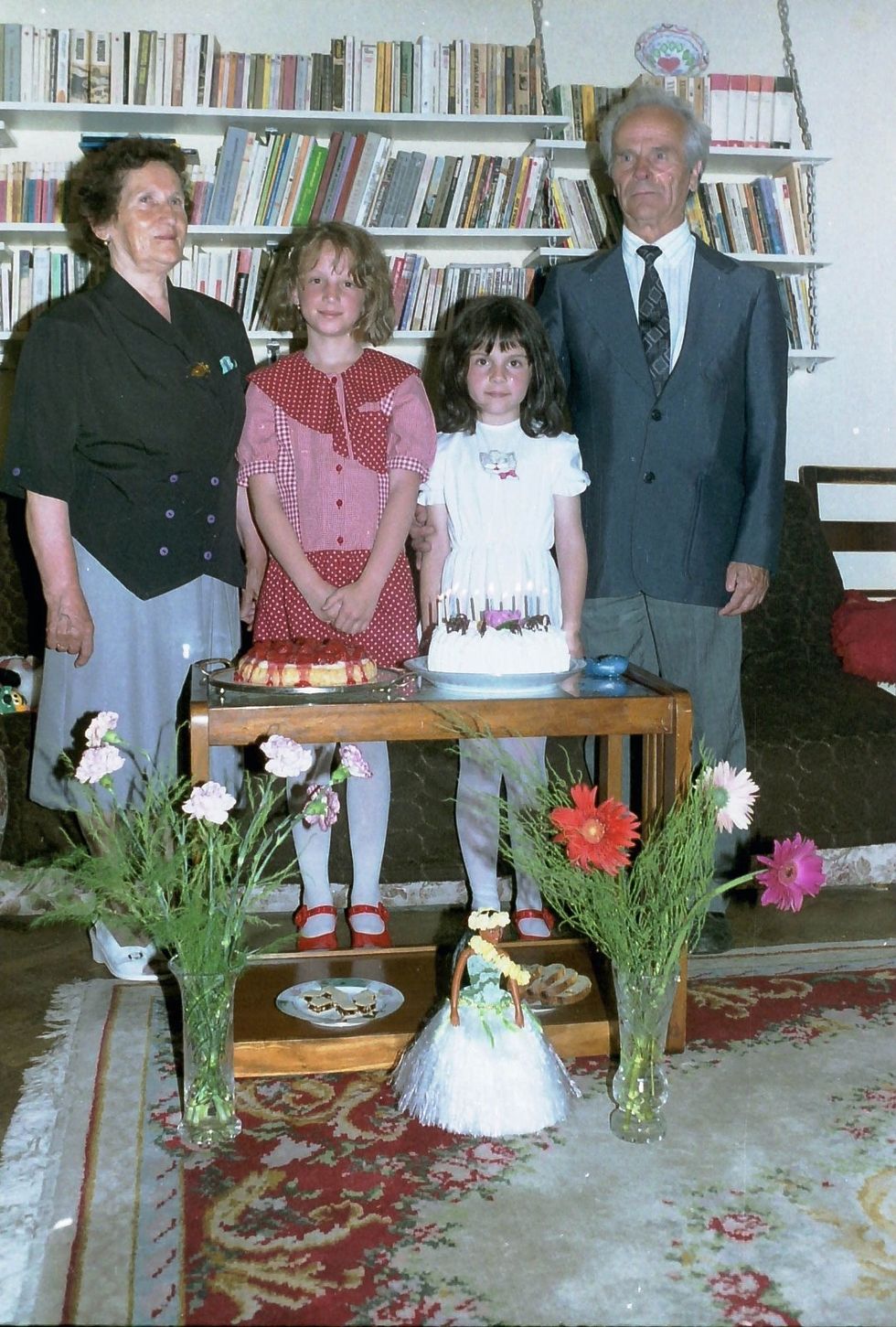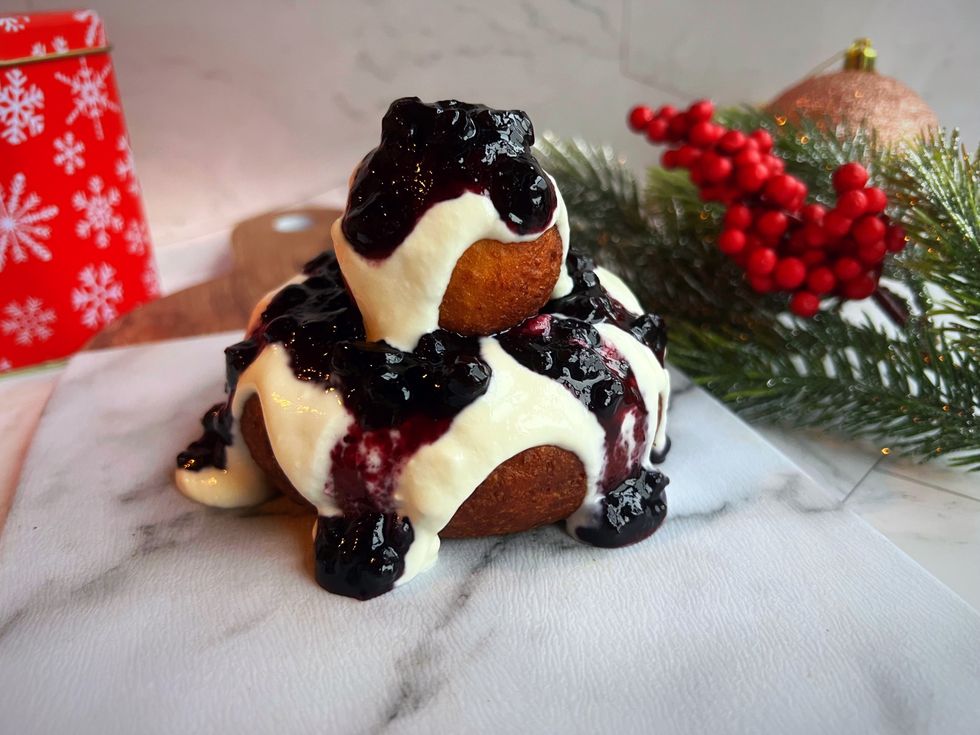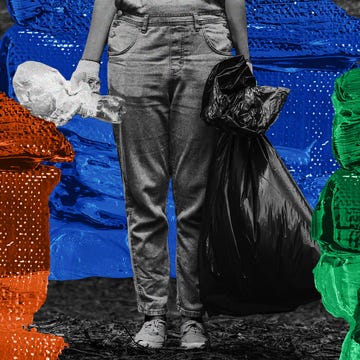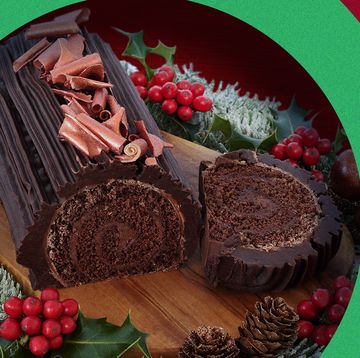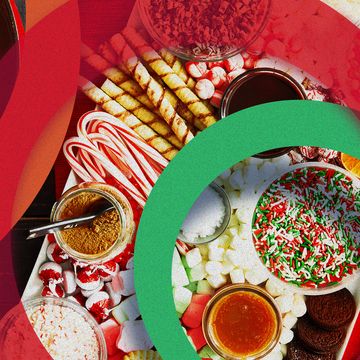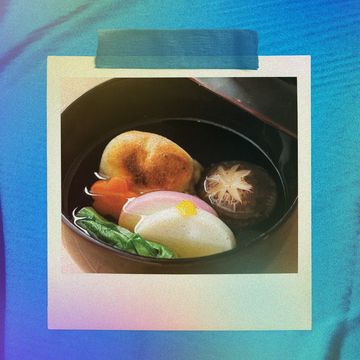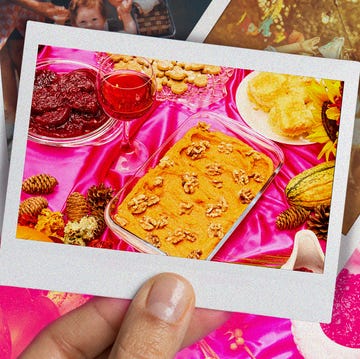This month at Shondaland, we’re celebrating once again what the holidays mean to all with our Food, Family, and Traditions series. These snapshots and vignettes from many of our beloved Shondaland stars, pals, and fans festively affirm the importance of communities both big and small coming together to celebrate.
Almost 100 years ago, my grandmother was born in Moldova. Growing up, she was one of 11 siblings. When girls in her culture turned 9 or 10, their moms would start teaching them how to cook and bake. By 14 or 15, they were expected to be married and provide for a family. That sounds unthinkable and terrifying now, but back then, that was the custom for young women like her.
When my grandmother was a young teenager, she left Moldova to visit a family friend in the southern region of Romania. While she was away, the Soviets came and closed the borders between Moldova and Romania. Her entire family was taken away from her in an instant. Her mother, father, and 10 siblings were placed like cattle onto a train to the Soviet Union. She never saw them again.
Grandma Tamara, or buna Tamara as we lovingly called her in Romanian, was unable to return home, so she moved to Transylvania to start a new life and move forward while also grieving her family. Still a young woman, she began working in a pastry shop. For two or three years, she threw herself into creating desserts and becoming an incredible chef and baker. It was there that she met my grandpa, got married within a year, and had two children: my mother and my uncle. It is Transylvania that became my origin story as well.
My buna Tamara and grandfather spoiled us rotten as kids, especially in the treats department. We would often stay with them overnight on the weekends. As a baker and excellent cook with a sweet tooth, buna Tamara would insist on having dessert after every single meal. It became a tradition for her to make us a different dessert every Sunday. Like any grandparents, they would just give me and my sister Adriana, who has since moved back to Romania, anything we wanted. And what we always wanted was papanași.
Papanași is a Moldavian dessert. My grandmother learned this recipe from her mother, who learned it from her mother. She kept the recipe in a tattered, handwritten notebook. The traditional Romanian treats are tiny doughnuts made out of sweet cow cheese that are deep fried or boiled and covered in sour cream and jam. She made all sorts of pies, pastries, strudels, and sweet breads (including cozonac, another Romanian favorite with a chocolate swirl), but the first time she made papanași, our little palates were never the same. How could any kid resist a deep-fried doughnut smothered in crème fraîche and homemade blueberry ooey-gooey goodness?
Around the holidays, especially every year on the European holiday called Saint Nicholas Day, desserts were a big deal in our family. We’d wait for Saint Nicholas to drop by and leave candies and chocolates in our boots. Buna Tamara would make all of her cakes and desserts. Everything was in absolute abundance at her house. When I tried making papanași myself for the first time, let’s just say it didn’t turn out as wonderfully. I had first-time jitters because it meant so much to me to get it right and honor her. I overworked the dough and the papanași turned out more like hockey pucks than anything else.
After immigrating to Canada when I was a young girl, my family found it challenging to find the right cheese for the recipe. Back in Romania, there was always fresh cow cheese readily available in abundance at the farmers market that we’d buy from familiar faces we’d visit every week. We would even get our milk fresh from the sheep and cows and boil it once we got home. When I honed my baking skills like my buna Tamara and finally found the right type of dairy, the recipe turned out just right. It was like I could hear her clapping and cheering in the room with me.
My grandmother passed away when I was 9, the age that she was when she learned how to cook and bake. Even now, after I’ve been baking for so many years now, kneading dough very much reminds me of her. My grandmother’s recipes were all she had left of her family, and they followed her on her tough journey. It leaves me in awe to think that my grandmother carried this papanași recipe with her from Moldova to Transylvania, that my mom carried it with her from Transylvania to Canada, and now I will carry it with me wherever I go in my lifetime.
The history of family recipes, and the love imbued in them, transcends space and time. I still wish that my grandma was over my shoulder teaching me from all of her experience. But in the midst of working the dough until I see the newspaper beneath it and tossing it in the air, I remember she is speaking to me through her papanași. The years may pass, and countries may change, but through this recipe, we’ll always have each other.
Papanași
Prep time: 2.5 hours. Cook time: 10 minutes. Yield: 4 papanași with top ball.
Doughnut Ingredients
- 250 grams baker’s cheese (Fintineanu recommends the M-C Dairy brand with 12 percent fat and 61 percent moisture; well-drained cow’s cheese with a higher fat content also works)
- 1 large egg, room temperature
- 1 teaspoon vanilla extract
- ½ cup (100 grams) granulated sugar
- zest of ½ lemon
- pinch of salt
- ½ teaspoon baking soda
- 1 cup (120 grams) all-purpose flour, sifted
- 500 grams vegetable oil for frying
Topping Ingredients
- 1 cup 35 percent whipping cream, cold
- ¼ cup powdered sugar
- ½ teaspoon vanilla extract
- sour cream or whipped cream
- blueberry jam, runny
Instructions
- In a large bowl, add the cheese, egg, vanilla extract, sugar, lemon zest, and salt. Mix with an immersion blender to break up the larger chunks of cheese, but do not mix into a smooth paste. It should still be rough.
- Mix in the baking soda and most of the flour with a silicone spatula, reserving a few tablespoons to dust the working surface and hands.
- Knead the dough lightly until it forms a ball. Do not overwork, as this will develop the gluten and make the doughnuts tough. The dough should be slightly sticky but manageable. Add the remaining flour only if necessary.
- Cover the dough with a piece of plastic wrap touching the counter surface, and let rest for 1 hour in the fridge.
- Divide the dough into 5 balls at about 95 grams each. Using some of the remaining flour, dust your hands and shape each ball into a doughnut shape by slightly flattening it, pushing a finger through the middle and gently rotating the doughnut around your palm.
- Place on a wax- or parchment-covered tray. Divide the fifth ball of dough into 4 pieces, and roll them into 4 balls that will be the top of each papanași.
- Heat the vegetable oil in a medium saucepan until it reaches 338° to 347° Fahrenheit (170° to 175° Celsius).
- Fry 1 to 2 doughnuts and balls at a time. Do not overcrowd the pan. The doughnuts will cook for about 6 minutes, or 3 minutes per side. The balls will cook for 4 minutes, or until golden. Transfer to a paper towel-lined plate.
- To make whipping cream, place the cold cream, powdered sugar, and vanilla in the bowl of a stand mixer. Using the whisk attachment, whip on medium-high speed until fluffy and light. Do not over-whip.
- To assemble, place the doughnut on a plate and spoon sour cream (or whipped cream for a less traditional version) on top, then some runny blueberry jam. Add the ball in the middle, and add a bit more cream and jam, letting it run down. Serve papanași hot and fresh.
Alina Fintineanu is a Romanian-born pastry chef who competed on the fifth season of The Great Canadian Baking Show. Follow her on Instagram @luxebaker.
Get Shondaland directly in your inbox: SUBSCRIBE TODAY

